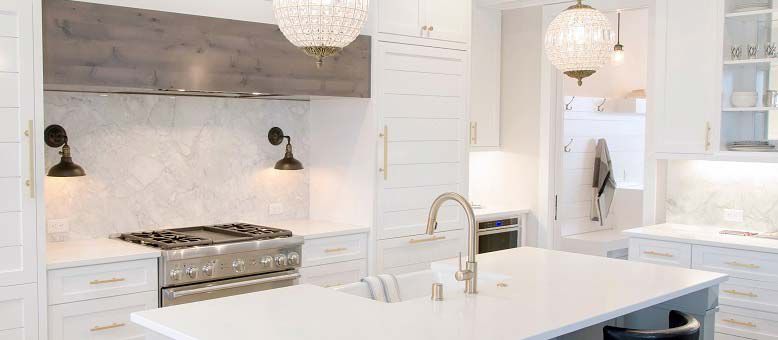Financing your home: how does mortgage insurance work?
Your home might be the biggest investment you make. Understanding how mortgage insurance works could help you make wiser decisions about saving for a home.
Are you dreaming of buying a home? If so, you’re in good company. A study found Canada has one of the highest rates of home ownership in the world, with 67% of residents owning their own home.
As an aspiring homeowner, you’ll need to learn about down payments, mortgages, and mortgage insurance. Understanding what these terms mean can help you clarify your financial plan for buying your first home.
What is mortgage insurance?
Although home ownership is a common goal for many Canadians, few people are able to buy their homes outright. Instead, they contribute a percentage of the purchase price and borrow the rest. The portion contributed is called the down payment, and the loan for the remainder of the purchase price usually comes from a mortgage, which is a type of loan secured against the home.
If your down payment is less than 20% of a home’s purchase price, you need mortgage loan insurance, also referred to as mortgage insurance or mortgage default insurance. Lenders require this insurance because a lower down payment means your mortgage is for a higher ratio of your home’s value, and lenders consider borrowers with high ratio mortgages as having a higher risk of default or non-payment.
How mortgage insurance works
In Canada, you can buy a home of $500,000 or less with a 5% down payment. Homes between $500,000 and $1,000,000 require a down payment of 5% on the first $500,000 and then 10% on the remainder. Homes over $1 million require a down payment of at least 20% on the entire purchase price.
And that’s good news for many homebuyers. Saving for a down payment while juggling other household expenses can be a challenge.
The mortgage insurance companies provide mortgage insurance to lenders. The three mortgage insurance companies are CMHC, SagenTM, and Canada Guaranty.
As a borrower, you likely won’t deal with your mortgage insurance company directly. Instead, you apply for mortgage financing through your lender. If your down payment is less than 20% of the home’s purchase price, you’ll need a high-ratio mortgage. Your bank or mortgage lender will apply to one of the mortgage loan insurance companies on your behalf.
How much does mortgage insurance cost?
Mortgage insurance isn’t free. Your lender pays a mortgage insurance fee or premium calculated as a percentage of the total mortgage amount. In most cases, your lender adds the cost of the mortgage insurance premium to your mortgage amount.
The percentage decreases depending on the down payment amount:
For example, if you put 5% down on a $400,000 home you’d need a mortgage of $380,000, or 95% of the purchase price. The CMHC mortgage premium would be 4% of the mortgage amount, or $15,200. This amount could get added onto your mortgage, bringing your total mortgage amount to $395,200.
Pros of mortgage insurance
Mortgage insurance offers several benefits to aspiring homeowners.
Firstly, it helps you buy a home sooner. Since the average Canadian income hasn’t kept pace with real estate prices, it may take years to save for a 20% down payment. Mortgage loan insurance lets you buy a home with as little as 5% down so you can stop paying rent and start building home equity as a homeowner sooner.
Mortgage loan insurance also adds stability to slow economic times, because it helps ensure mortgage funds are available to home buyers. It lowers the risk of lending, and helps borrowers buy homes they wouldn’t qualify for otherwise.
In addition, it also helps ensure borrowers get a competitive interest rate on their mortgages. High-ratio mortgages (also called insurance mortgages) often get better rates than uninsured mortgages.
Cons of mortgage insurance
One of the biggest cons to mortgage insurance is the cost of the premium. Since it’s usually added to your mortgage amount, you’ll pay interest on the money you borrowed plus mortgage loan insurance – for the life your mortgage.
Since the mortgage insurance premium is added to your mortgage amount, it reduces your home equity or the degree of your ownership in your home after accounting for the total mortgage amount.
In addition, in Manitoba, Ontario, Saskatchewan, and Quebec, provincial sales tax applies to your insurance premium. However, you can’t add that tax to your mortgage, and you have to pay it up front.
Mortgage loan insurance is NOT mortgage protection insurance
It’s easy to confuse mortgage loan insurance and mortgage protection insurance, but they aren’t the same thing.
The easiest way to remember the difference is mortgage loan insurance refers to an insured mortgage, or a mortgage that is insured because the down payment was less than 20%. Mortgage loan insurance protects the lender.
On the other hand, mortgage protection insurance pays off the balance of the mortgage should one of the borrowers pass away. Some mortgage protection insurance policies also pay some or all of your mortgage if you lose your job or become disabled.
Couples who depend on two incomes to qualify for a mortgage or couples with one income earner only might consider mortgage life insurance to protect their finances. Mortgage life insurance protects the borrowers.
Your home might be the biggest investment you make, and chances are your mortgage will be your biggest loan. Understanding how mortgage insurance works could help you make wiser decisions about saving for a home, and help to clarify the steps you should take to make your home buying dreams a reality.


